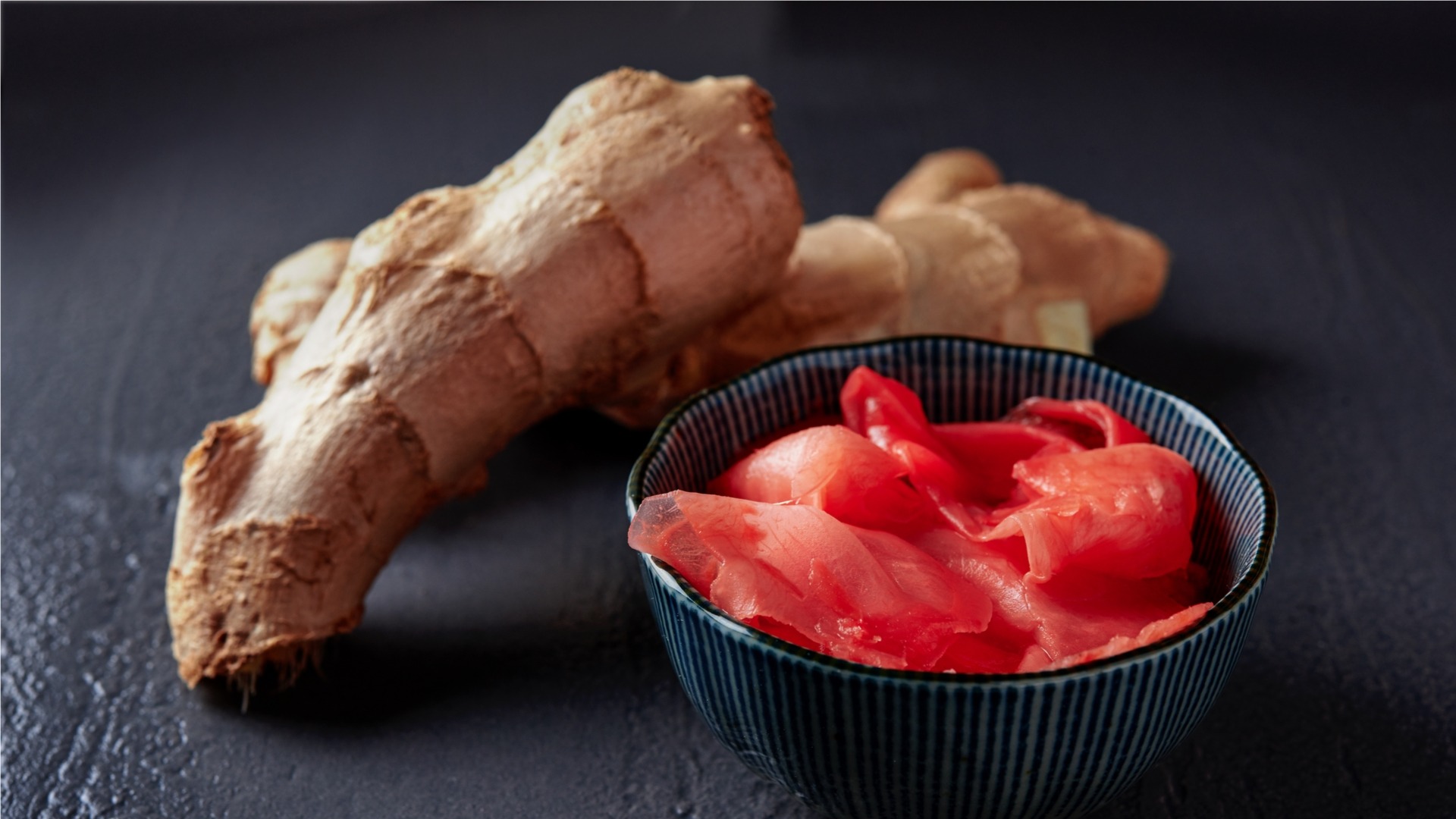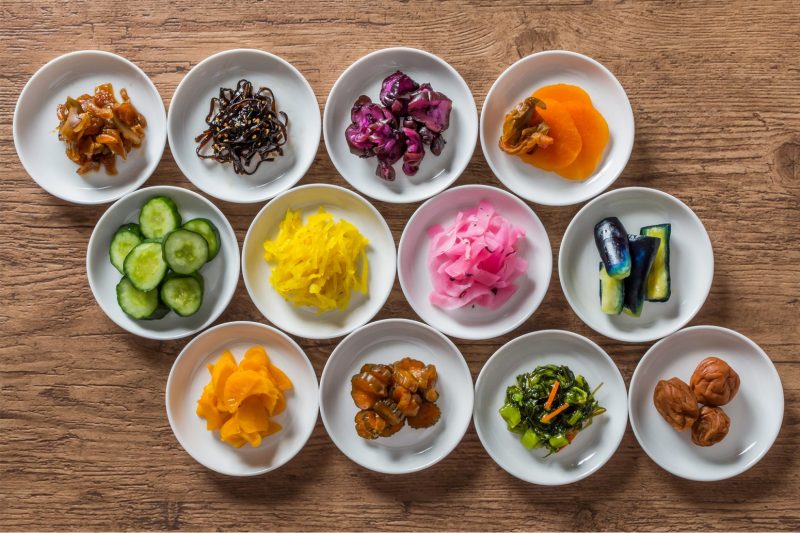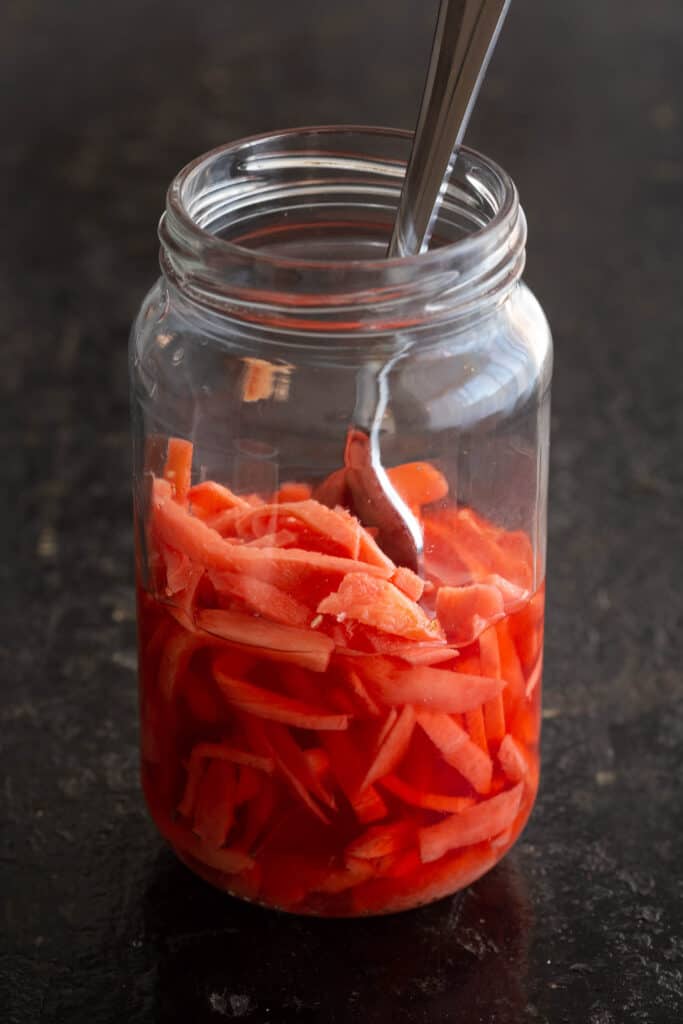
Japanese pickles hires stock photography and images Alamy
1. Shiozuke (Salt Pickling) Shiozuke is the simplest Japanese pickle to start with. You can literally use almost any vegetables - cucumbers, carrots, eggplant, daikon, celery - with this salt pickling method. There's plenty of tips and easy-to-follow guides in the post.

Japanese Pickled Ginger Chef's Mandala
1) Slice Vegetables about 2 to 3 mm width. Each sizes will be a bite size. Then put it in the Salt Water and leave it for about 30min. 2) Squeeze moisture from vegetables. 3) Mix all ingredients for the sauce in a pan and heat it boil. 4) Put all vegetables in a pan and boil down until the sauce will be less. 5) Stop heat and make it cool.

Tsukemono Japanese Quick Pickled Cucumbers (Shiozuke Tsukemono) Recipe Quick pickled
What Is Tsukemono Tsukemono refers to Japanese pickles, which translates to "pickled things." These pickles come in various styles, flavors, and colors and are often served as side dishes or accompaniments to meals in Japanese cuisine. The Japanese eat them with plain rice, mix it into onigiri rice balls, or pack it in their bento boxes.

Japanese Pickles. Red Fukujinzuke Stock Image Image of asian, pickle 191116655
What Is Tsukemono? Japanese pickles—known collectively as tsukemono—can easily go unnoticed as part of a washoku (traditional Japanese) meal.

Tsukemono Common Pickle Dishes Samurai Tours
Mix the shoyu, mirin, and rice wine vinegar to make the sanbaizu brine. Wash the salt off the vegetables and drain. Rinse the sea grapes. Combine the salted vegetables, sea grapes, and sanbaizu brine. Marinate in the refrigerator for at least one day and up to three days. Taste them along the way to see how salty you like them.
Japanese Pickles 3ways (漬物) Tsukemono Recipe
Japanese Pickles or Tsukemono (漬物) are a delicious way to preserve vegetables. Serve them along with a bowl of rice and miso soup for a traditional Japanese breakfast. This Asazuke (浅漬け) is an easy fresh pickle made with napa cabbage, carrots, scallions, and ginger that's ready to eat in a matter of hours. Recipe Video Pin Tsukemono (漬物)

Wagaya Kizami Red Pickled Ginger, 340 g Japan Centre Pickles
Umeboshi (pickled plum) is a type of heavily salted pickle made with sour Japanese plums. Red umeboshi nestled in a bed of white rice is a common sight in Japanese bento lunches. While the plums are green before pickling, they get their distinctive color from the red shiso leaves used in the pickling process.

Japanese Pickles. Red Fukujinzuke Stock Image Image of asian, pickle 191116655
Umeboshi or pickled plums (the reddish lumps pictured above) are arguably the most famous Japanese pickles. The just-ripened fruit of the ume tree, which belongs to the prunus family of fruit trees (which includes the various kinds of Western plums, apricots, peaches and cherries), are pickled in a very time consuming and prolonged process.
/japanese-daikon-pickles-tsukemono-2030915-hero-01-7d3e4da79e664c7bbc662afa7c1abdd3.jpg)
Spicy Japanese Pickled Daikon Tsukemono Recipe
Amazu-zuke (甘酢漬け) is a Japanese technique of pickling fresh vegetables in sugar and rice vinegar. The most well known example of an amazu-zuke is gari, or pickled ginger, the ever present companion to sushi. In my opinion, radish, daikon, and turnip are also good when pickled with this technique.

Japanese Pickles. Red Fukujinzuke Stock Photo Image of dinner, oriental 191116660
Ensure that the ginger is fully submerged in the liquid. Seal the jar or container with an airtight lid. Place it in the refrigerator, and let the flavors meld for at least 24 hours. The longer it sits, the better the flavors will develop. Your homemade Beni Shoga is ready to complement your favorite Japanese dishes.

Japanese Pickles 3ways (漬物) Tsukemono Recipe
In a storage container stir together the vinegar, salt, sugar, chile and zest until the sugar is dissolved. Taste for balance. Pour about a 1/4 of the pickling blend into a smaller container. This is where you'll pickle the radishes so their color won't tint the other vegetables. The turnips and carrots go into the larger container.
/japanese-daikon-pickles-tsukemono-2030915-hero-01-5c6edabb46e0fb0001436190.jpg)
Spicy Japanese Pickled Daikon Tsukemono Recipe
Print Recipe Sweet and Sour Pickled Red Cabbage is a super easy side dish that can go with almost any dishes. The bright colour of red cabbage is so attractive that you can even use a small amount of it as a garnish for grilled fish. The addition of dashi stock makes this pickled dish distinguishes from the Western-style pickled red cabbage.

Japanese pickles. Red Stock image Colourbox
Daikon Cucumber Lotus Root Eggplant Young Ginger Shiso leaves Condiments: soy sauce, mirin, rice vinegar, sugar, kombu, and white sesame seeds Overview of Cooking Process Cut vegetables into thin, small pieces. Sprinkle salt to withdraw moisture from the vegetables for 20 minutes. Make pickling solution by combining all the condiments.

3 Ingredient Japanese Red Pickled Ginger Beni Shoga Wandercooks
Japanese pickles (漬物, tsukemono) are an important part of the Japanese diet, served with practically every traditional meal alongside rice and miso soup. They are valued for their unique flavors and commonly used as a garnish, relish, condiment, palate cleanser or digestive.

Tsukemono Japanese Pickles
Step 1: Prepare the vegetables With any vegetable you choose for tsukemono, it's important to give the outside a good rinse to remove any dirt. Then chop the vegetable into bite-sized pieces, whether that's thinly sliced, in wedges or strips. Step 2: Remove excess liquid A key step in making tsukemono is drawing out excess liquid.

Japanese Pickles Just 3 Seasonings! everyday washoku
Daikon (大根), also known as winter radish or Japanese radish, is a variety of large white radish used in Asian cooking. It is especially popular in Japanese cooking. What does daikon taste like? It tastes like regular red radishes but with a much milder flavor. When eaten raw, it has a refreshing crunch and a light peppery taste.